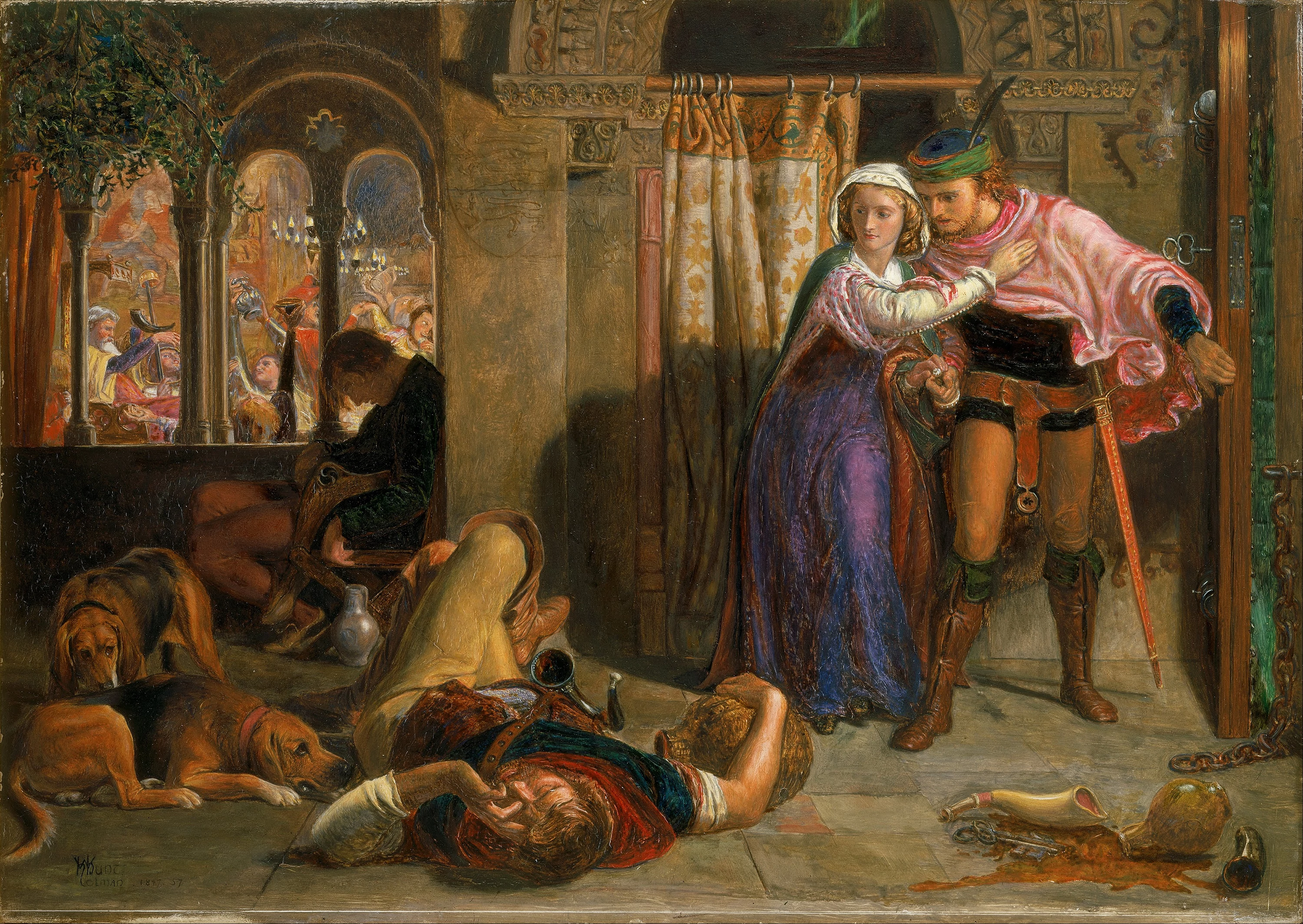


William Holman Hunt, like his fellow Pre-Raphaelites, was deeply influenced by the romantic poetry of Keats, in particular The Eve of St. Agnes, a 42 stanza tale of martyrdom and virgin love, published in 1820. Hunt’s painting Flight of Madeline and Porphyro depicts the two final stanzas of the poem, where the two lovers flee into the night. The painting impressed audiences at the 1848 Royal Academy Exhibition so much that Rossetti sought out Hunt and inducted him into the Pre-Raphaelite Brotherhood, beginning a friendship and long standing collaboration.
Final stanzas of The Eve of St. Agnes by John Keats, 1819:
XLI.
They glide, like phantoms, into the wide hall;
Like phantoms, to the iron porch, they glide;
Where lay the Porter, in uneasy sprawl,
With a huge empty flaggon by his side;
The wakeful bloodhound rose, and shook his hide,
But his sagacious eye an inmate owns:
By one, and one, the bolts full easy slide:—
The chains lie silent on the footworn stones;—
The key turns, and the door upon its hinges groan.
XLII.
And they are gone: ay, ages long ago
These lovers fled away into the storm.
That night the Baron dreamt of many a woe,
And all his warrior-guests, with shade and form
Of witch, and demon, and large coffin-worm,
Were long be-nightmar’d. Angela the old
Died palsy-twitch’d, with meagre face deform;
The Beadsman, after thousand aves told,
For aye unsought for slept among his ashes cold.
...
Got questions, comments or corrections about The Flight of Madeline and Porphyro? Join the conversation in our Discord, and if you enjoy content like this, consider becoming a member for exclusive essays, downloadables, and discounts in the Obelisk Store.
